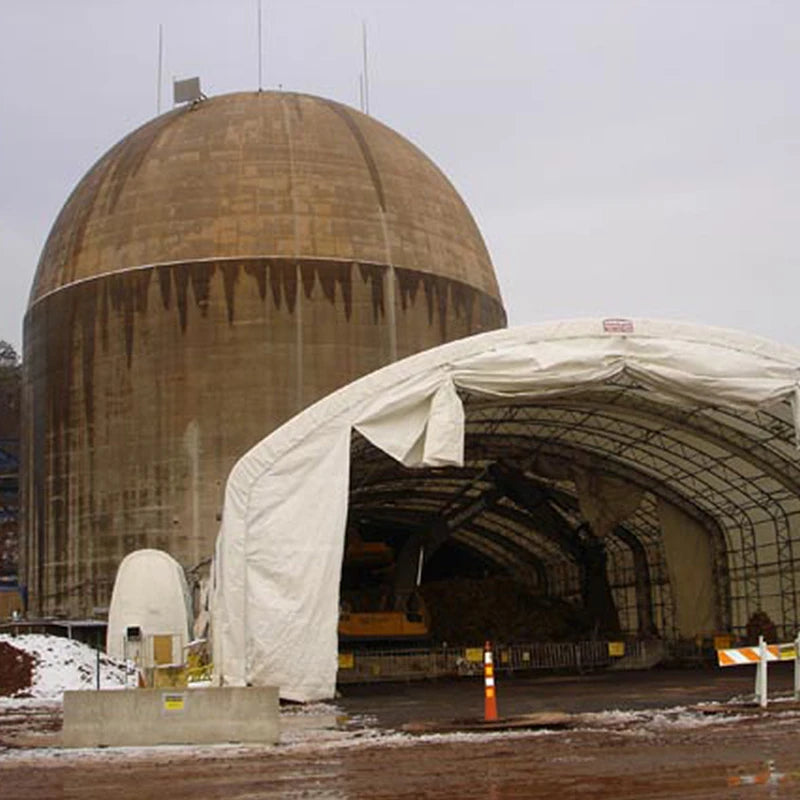Living near a decommissioned nuclear facility raises significant safety concerns that can affect the health and well-being of nearby residents. As nuclear power plants reach the end of their operational life, they undergo a decommissioning process, which aims to safely dismantle the facility and manage any associated risks. Understanding the implications of living near these sites is crucial, especially regarding potential health risks and community responses. In this article, we will explore the safety concerns associated with decommissioned nuclear facilities and how local communities are addressing these issues.
Understanding Decommissioned Nuclear Facilities
A decommissioned nuclear facility refers to a nuclear power plant that has ceased operations and is undergoing a systematic process to safely retire its components. This process involves removing radioactive materials, dismantling structures, and ensuring the site poses no risk to the public or environment. Facilities are typically decommissioned due to age, economic factors, or regulatory decisions, following strict regulations set forth by national and international bodies.
The history of decommissioned facilities often involves rigorous safety protocols, as improper handling can lead to environmental health risks. Potential risks include soil and water contamination from residual radioactive materials, which can pose serious health hazards to local communities. Understanding these dangers is critical for residents living nearby.
Community Health Initiatives
Local organizations and government bodies play a vital role in addressing health concerns associated with living near decommissioned nuclear sites. Community health initiatives are essential for monitoring environmental conditions and ensuring public health safety. These initiatives often involve regular health screenings, information sessions, and community engagement to keep residents informed about potential risks.
For instance, health departments may offer resources such as workshops and materials that educate residents on radiation exposure and its effects. By actively participating in these local community resources, residents can stay updated on safety measures and health protocols, fostering a sense of security and empowerment.
Environmental Monitoring Systems
Ongoing environmental monitoring systems are crucial for assessing safety in areas surrounding decommissioned nuclear facilities. These systems are designed to track environmental changes and detect any anomalies that may arise post-decommissioning.
Radiation testers are key components of these systems, providing real-time data on radiation levels in the area. These devices help ensure that any potential risks are promptly identified and addressed. Additionally, environmental impact assessments are conducted to evaluate the long-term effects of the decommissioned site on the surrounding environment, ensuring that community health is safeguarded.
Nuclear Waste Management
The handling of nuclear waste is a significant aspect of the decommissioning process. Nuclear waste management involves the safe storage and disposal of radioactive materials to prevent contamination of the environment. Regulatory frameworks are established to govern these practices, ensuring compliance with public health policies designed to protect local residents.
Effective waste management practices include secure storage facilities and long-term monitoring to mitigate any potential risks associated with residual waste. By implementing stringent safety measures, communities can feel more secure about the safety of their environment.
Public Health Education and Policies
Public health education is vital in raising awareness about the risks associated with living near decommissioned nuclear facilities. Engaging the community through educational initiatives can help residents understand safety measures and protocols in place.
Moreover, local engagement efforts aim to increase community involvement in health and safety discussions, fostering collaboration between residents and health authorities. Local emergency services also play a crucial role in responding to any incidents related to the facility, providing immediate assistance and ensuring community safety.
Personal Safety Measures
Residents can take practical steps to ensure their safety when living near decommissioned nuclear facilities. For example, using devices like the Milerd HiStand can help monitor radiation levels in their homes and surroundings, offering peace of mind.
Additionally, being informed about local emergency response plans and services can enhance individual preparedness for potential incidents. Regular health check-ups and monitoring for radiation exposure are also recommended to maintain health and well-being.
Conclusion
In conclusion, living near a decommissioned nuclear facility involves several safety considerations that require attention from both residents and local authorities. By understanding the risks and engaging with community resources, individuals can take proactive steps to protect themselves and their families. Staying informed about health initiatives and monitoring practices will contribute to a safer living environment. For enhanced safety and awareness, consider using the Milerd HiStand to stay vigilant about radiation levels in your surroundings.



Laisser un commentaire
Ce site est protégé par hCaptcha, et la Politique de confidentialité et les Conditions de service de hCaptcha s’appliquent.